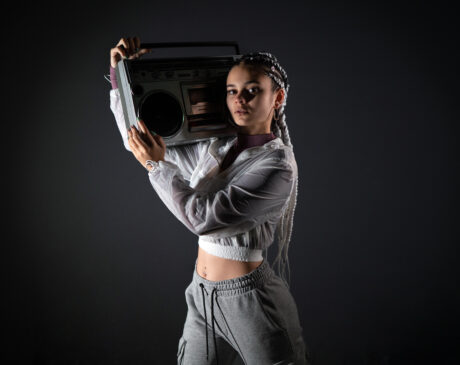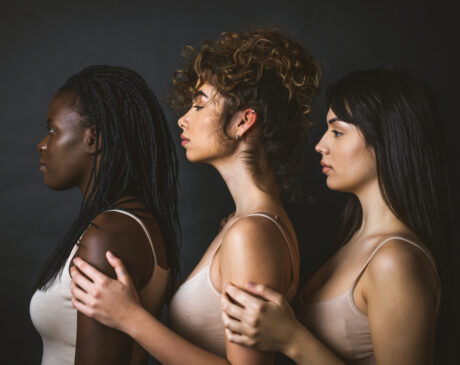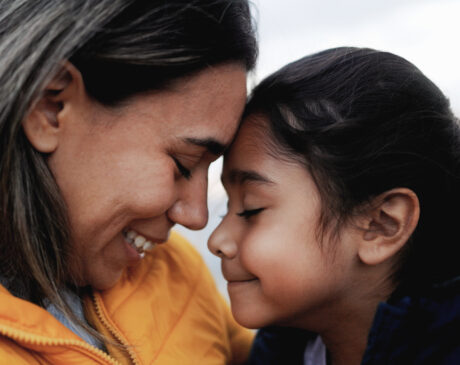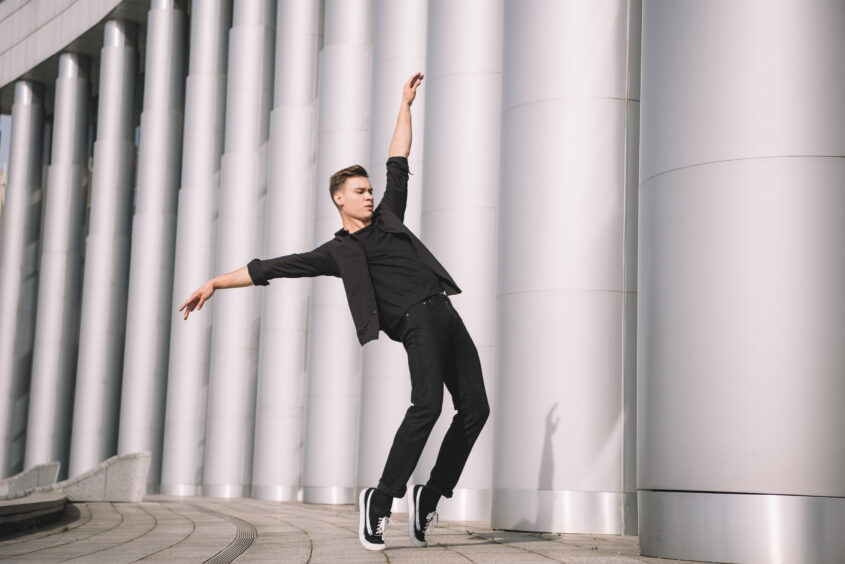
Dancing Beyond the Gender Binary
Part One of Three: Bullying and Gender Interact
In this three-part series for LA Dance Chronicle, I am studying the various ways that bullying and gender interact, affecting leadership, individual success and failure, mental health, and representation in dance. If you are coming to this series fresh, you can read the introductory article here. The second piece looks at bullying and the gender gap in leadership. This final piece addresses gay, lesbian, gender fluid and queer representation in dance, both how dancers who don’t fit into the binary have been quashed and how the dance community is finally expanding and starting to include all voices and stories, both in and out of mainstream companies.
#BoysDanceToo began to trend after the hosts of Good Morning America bullied England’s Prince George for taking ballet and the dance community went wild. Our community fought back, with dancers posting photo after photo of gorgeous men flying through the air. Our dance royalty took to the airwaves with a follow up interview and gave a ballet class in Times Square. The power, grace and masculinity of dance was extolled and celebrated. It was beautiful but very specific. The photos and videos were of traditionally masculine dancers, heavily muscled, showing off incredible athleticism. There were the requisite “football players take dance” articles and endless anecdotes about the strength of ballet dancers. It started to concern me, all of this focus on hypermasculinity. It is undeniably beautiful and an important aspect of dance, but certainly not all of it, nor even the majority. ALL bodies dance, and as I started to look at bullying in dance, to hear story after story of the pain, repression and loss that so many dancers experience, I was drawn to join the exploration of gender beyond the male/female binary and whether dance, a deeply patriarchal institution, is adapting to today’s evolving gender and sexuality norms.
The intersectionality of race, gender and sexuality is complicated, intensely important and warrants much more additional and specific research.
There are a lot of definitions regarding gender and sexuality. I want to thank The Radical Copyeditor for their guide, which I found indispensable. A reminder that the language of gender identity and gender expression is constantly evolving and it is on us all to remain open and flexible. The dancers that I interviewed identify as follows, so these are the terms that I will employ in this article.
- Sexual orientation: Who one is (or is not) attracted to.
- Gender orientation: One’s gender identity and expression of gender
- Cis-gender: A person whose gender aligns with that assigned at birth
- Transgender man: A person assigned female at birth who identifies as male.
- Transgender woman: A person assigned male at birth who identifies as female.
- Trans: Both an abbreviation for transgender and a more inclusive term for all whose genders differ from those assigned at birth.
- Gay Man: A man (cis or not) who is sexually attracted to men.
- Lesbian: A woman (cis or not) who is sexually attracted to women.
- Non gender conforming: a person whose gender expression (by way of dress, mannerisms, roles, etc.) does not conform to stereotypical gender expectations for someone of their gender.
- Non-binary, or gender non-binary: a person whose internal sense of self is not exclusively woman/female or man/male. Some non-binary people identify as both woman and man (e.g., bigender people), some identify as a different gender entirely (e.g., genderqueer people), and some do not identify with any gender (e.g., agender people).
- Queer: another sexual orientation, neither straight nor gay. According the Radical Copyeditor, “Queer is a complex word with many different definitions, and in the context of trans communities, it must be recognized as a valid identity term.” It can also be used as an umbrella term to differentiate from cisgender and heterosexual.
For detailed definitions check out the Human Rights Coalition list of terminology and definitions. Finally, a reminder that identity and sexuality are very individual and each person will have their own identity, story and relationship to their own sexual and gender identity.
Before I jump in, some caveats. These are the particular stories and experiences of these people. In no way is this article reflective of the experience of all dancers. And, once again, I am not speaking to the particular situations that Black and Brown dancers experience in the realm of gender and sexuality in dance.
Finally, this article focuses on Western Dance, specifically American ballet, contemporary and modern dancers and companies.
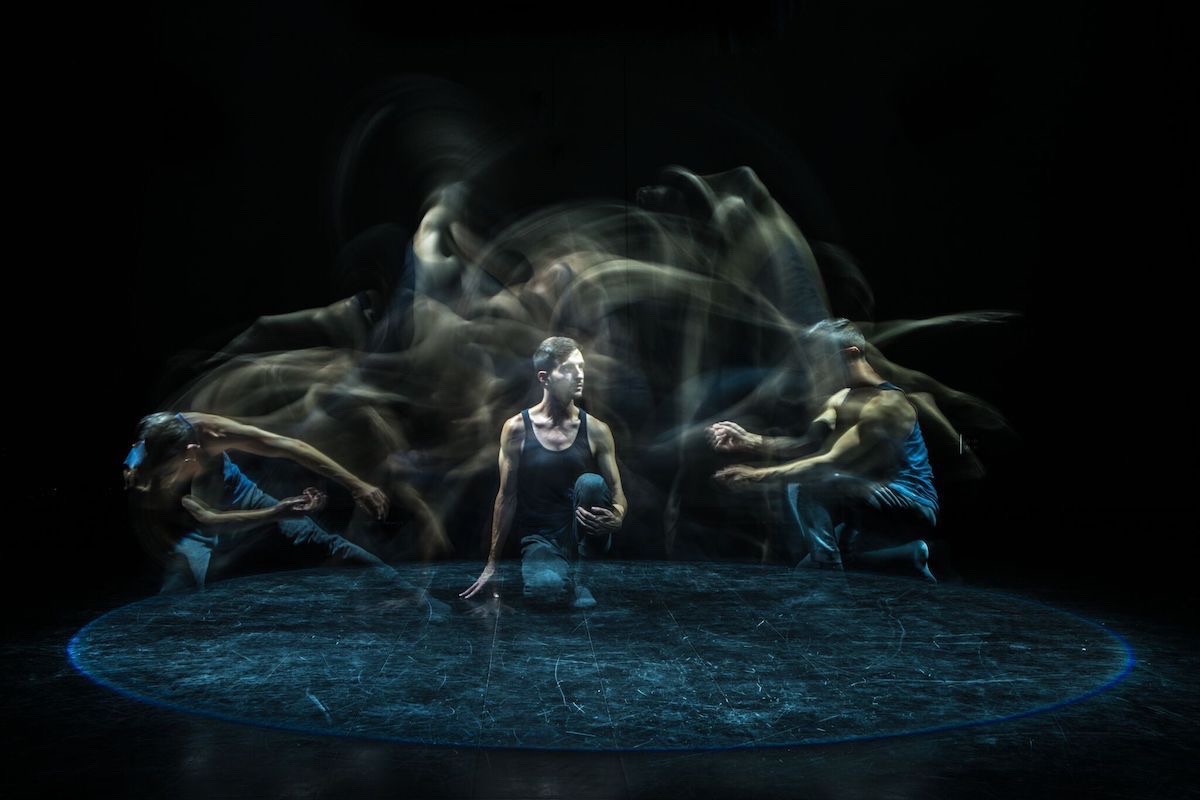
How does this emphasis on hyper-masculinity affect dancers?
The first layer of my exploration of the acceptance of different genders and sexuality in dance started with the hyper masculine response to the bullying of Prince George. #BoysDanceToo and #BoysDance trended quickly and the photos on Instagram and Facebook were gorgeous but in general, hyper-masculine. I admit that I too posted photos of men flying through the air from my most recent piece, celebrating their athletic glory. But I also paused. The spectrum of those who dance is broad and includes so many bodies. Not everyone is highly muscled and stereotypically princely. There are numerous dancers who identify as male who present in a softer, less aggressive manner. How does this emphasis on hyper-masculinity affect dancers who do not fit into that lane? And would these same dancers come to the defense of others in the community who might not be as visible nor be perceived as such a valuable commodity.
I spoke to two cis gay men and two trans men about their experiences in the dance world and how masculinity in all forms has affected their presentation, goals, sense of self and professional trajectory. Andrew Pearson is a Los Angeles based dancer, choreographer, dance educator and Artistic Director of Bodies In Play. Spencer Ramirez is a bi-coastal dancer and teacher who attended Juilliard and has gone on to dance with numerous concert choreographers including Mark Morris, Chase Brock, Body Traffic, as well as for countless commercial choreographers and as a Broadway hoofer. Sean Dorseyand Ashley R.T. Yergens are both out trans men forging successful careers in concert dance. Yergens, a Dance Magazine 25 to Watch in 2020 honoree, lives and works in New York. Dorsey, one of the pioneering trans artists in the country has a company in San Francisco. None has had a clear or easy journey, facing discrimination, bullying and disappointment along the way.
When asked what gender expectations or norms they had struggled with, especially as young dancers. Ramirez said, “I do remember constantly being expected to fit into the classical ballet archetype of ‘Male and female’. As a man, I was meant to imitate that bravado, machismo figure constantly. The men are the frame and the women are the picture. Although I never really took issue with it, because I loved pretending to be this strong manly character, I do realize the boxes that it places young children in at such an early age. I’m glad to see that slowly in the dance community these days, young men and women are being allowed to explore outside of the classical archetype and find their individual voices, but there is still a long way for it to go. We find it in the professional (commercial) industry too though. When I first moved to LA, my agent told me I ‘needed to build muscle and act more masculine at auditions’ if I wanted to book any work.”
Pearson had a similar experience in regard to body expectations in the more classical world. I was told that “I should be taller and/or more built and muscular. I’ve also had choreographers and teachers assume I’m not strong enough for certain lifts or be surprised when I can achieve them. However, this has been rare. I’ve avoided the more classical work and mostly worked with choreographers and companies that don’t take these kinds of norms into consideration or place them as a value.” Yergens spoke of the journey that he has taken in regard to gender and dance. “Prior to transitioning with HRT, I was quite literally told to move more ‘gently’ and ‘femininely.’ Now, I’m not ‘masculine’ enough. In a static image, I pass as a cis-gender man. However, when I move, I feel like I see two different bodies that perhaps have two different genders, and they’re struggling together to communicate movement. I think this is a result of not having balletic or contemporary training in this new body, and I’ve unfortunately received the message enough times that a dancing body should consist of this knowledge in order to be a ‘professional’.”
These artists articulated, with much more eloquence than I, a similar discomfort with the bullying episode of Prince George and the one-sided jump to defense of masculine dancers. Yergens had a viscerally emotional response, which I share in its entirety. “As a society, we bully cis boys for dancing because of homophobia and our unchecked ideas of appropriate femininity. I stand up for cis boys and cis men. I just wonder if they always stand up for me too. I wonder where the outcry was when I got made fun of for looking too much like a boy in my leotard in the second grade. I wonder where the rage was when I was 16 and forced to do the men’s choreography because I moved “too manly” yet the choreographer refused to acknowledge me as the man that I am because of transphobia.
I wonder where the other voices were when my professor told me I was ‘such a hairy woman, and it would be unfortunate to partner with you’ in front of 20 classmates. I wonder where safety was when I first started hormone replacement therapy, and the cis men laughed at me in the changing room, and the cis women yelled at me to get out of theirs …I wonder where the fury was when a prolific gay artistic director asked me if I ‘transitioned to be more palatable’ to his tastes, as if my body’s sex exists to whet the appetites of cis men who would never actually partner and love me in the way that I deserve to be loved because I’m ‘not a real man.’ I wonder if you can relate to the pain of having a choreographer purposely misgender you and ask you to move more like a man at the same time. I wonder if the gorgeous dancing cis men in their gorgeous directorial and creative positions will ever open up the field’s gates for trans men like me.”
Dorsey too had a multi-layered response. “I found the dance field’s overall response to the Prince George bullying incident fascinating – and overall disappointing. Yes of course we should rise up and speak out when young cis-gender boys are bullied simply for studying ballet. But that should have only been one element of a much larger, intersectional conversation. Unfortunately, it’s about as far as the media and the mainstream dance field went. Where was the outrage for the immense bullying and harm to trans girls and boys and non-binary kids who want to or are studying dance? Where was the outrage around white supremacy in the ballet field and modern dance field (and America in general)?” He continued, “And why did the entire conversation largely REINFORCE toxic masculinity ‘hey, men ballet dancers ARE strong, tough and they’re still REAL MEN!’ rather than tackling it ‘we reject homophobic and transphobic toxic notions of masculinity! Instead, we celebrate the glorious, full range of human expression available to all of us who love ballet – we are strong, we are fluid, we are expressive, we are tender, we are vulnerable, we are beautiful!’.”
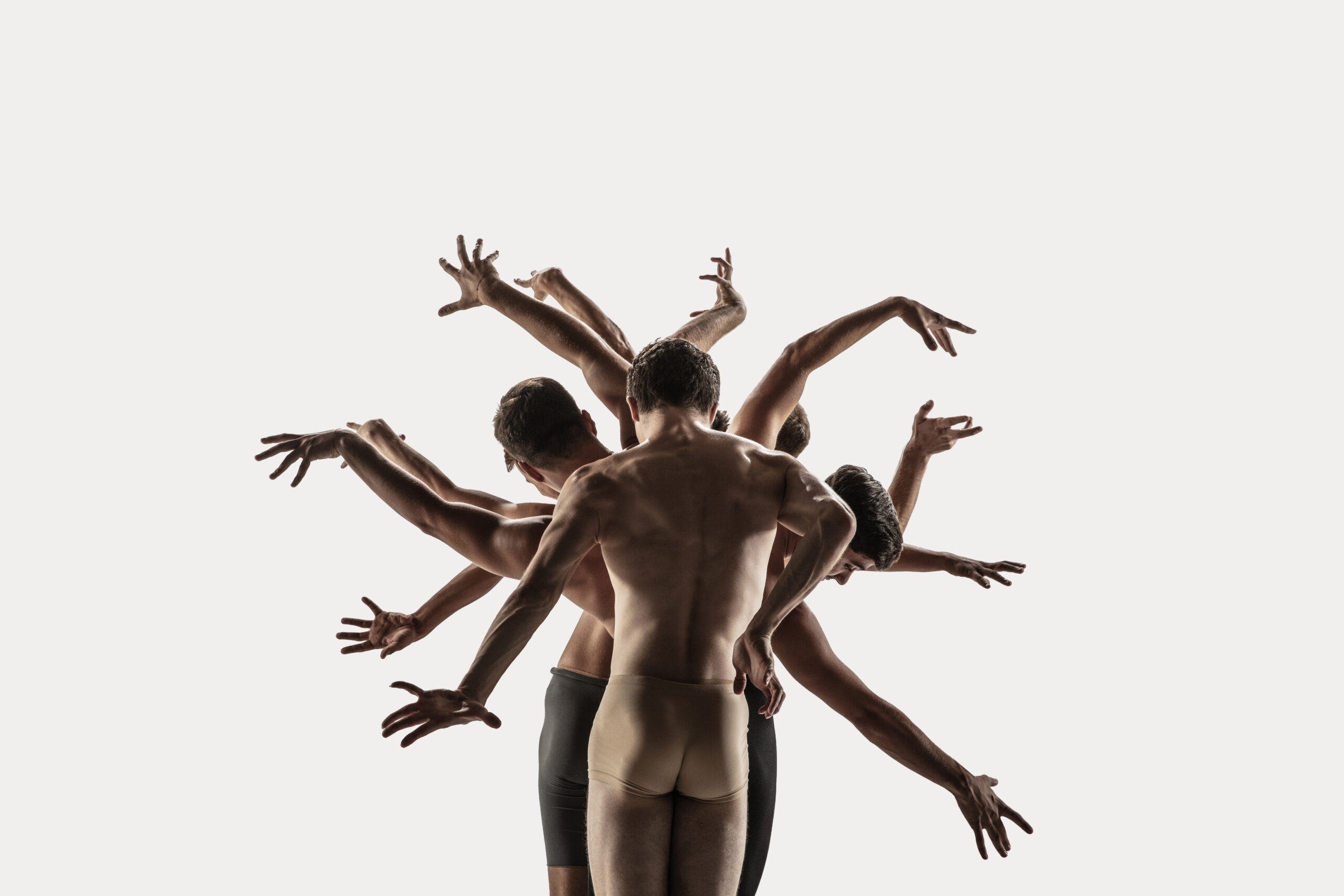
Both Dorsey and Yergens shared numerous stories throughout their life journeys of bullying and isolation in the dance world. These experiences are absolutely elemental to their identity as dancers, trans men and artists. Dorsey recounts one of his first experiences as a very young choreographer. “That first piece of choreography I made at school was definitively queer – and like much of my work to follow, based on a text-based original soundscore with my own writing. It was a queer duet, and it was SUCH early work of mine, but I was floored when the local dance community all came up to talk to me afterward and said that they loved my movement vocabulary and my young choreographic voice; they said they couldn’t wait to see what I’d do in the future. I was elated! The next day, the Director of my school called me into her office. She sat me down and said “your piece last night made people feel very uncomfortable.
“I remember that moment like it was yesterday (even though it was 22 years ago!). In that moment, all the experiences I’d had of the rigidly gendered dance world, costuming, hetero-normative expectations, everything came flooding back. And in that moment I also realized: I had found my calling. THIS is how I could affect change in the world; my deepest passion and desire is to be of service in the world – and I realize in that moment that I could shift people. And possibly culture.”
That first piece of choreography I made at school was definitively queer –
Sean Dorsey
This idea and desire comes up over and over among these artists: This is how to be the change! The artist and the activist as one. It is incredibly brave to put one’s soul on display in that manner. To that end, sexuality and gender identity is integral to the work of all of these artists. Pearson explains his process.
“I think the way I see the world as a dance maker and as an out gay man have definitely been affected [by his sexual orientation].
My gayness is intrinsically connected to the way I make work now. For years this was not the case, keeping my personal life separate from my performance/work life, but I found I couldn’t make dance authentically unless I confronted my sexuality. I now have an aversion to heteronormative approaches to dance making, or at least unconscious choice making that sway toward heteronormative.”
Trying to fit into a set idea of masculinity is difficult, especially when the definition itself is constantly evolving. Pearson said, “For the first – I think masculine energy is not gender specific but that in dance it personifies strength, bound flow, and more boisterous virtuosity. This has usually manifested in large jumps, multiple turns, showcasing power. But again, I don’t think any of this has to be gender specific.” He continued, “I’m over this argument. It’s dated, one-sided, and suggests an apology for men doing anything that may seem feminine. I don’t feel anything like a football player. I don’t identify with that game or with the people who play it. I don’t need people to know that football players take ballet to justify my love of the practice.” He also echoes Dorsey’s take on toxic masculinity. “I also certainly am not in dance in order to touch girls all day – which also feeds into today’s rape culture, suggesting that if a man is in a dance class he has the right to touch women.”
To read the full article and series, please click below.
PART ONE: Dancing Beyond Gender Binary
